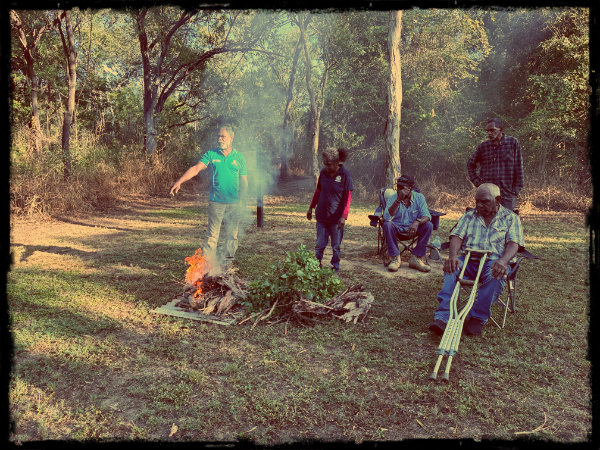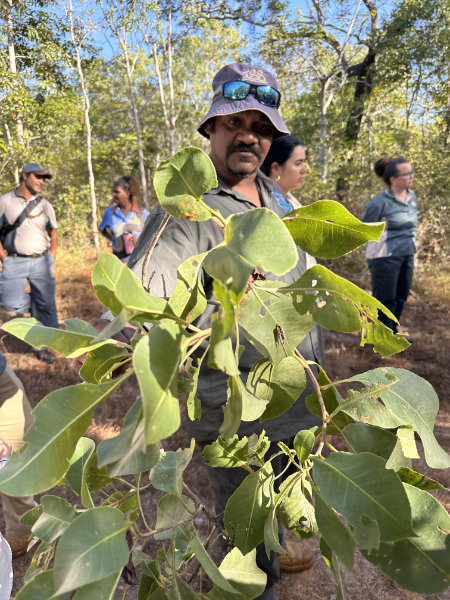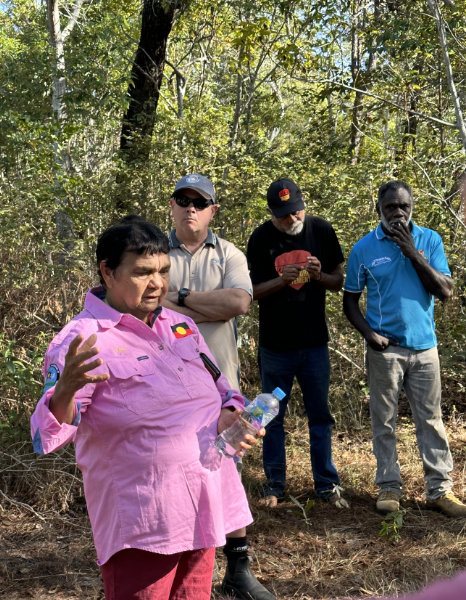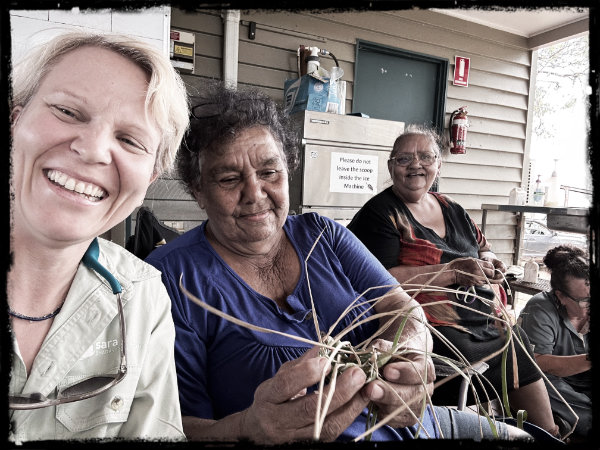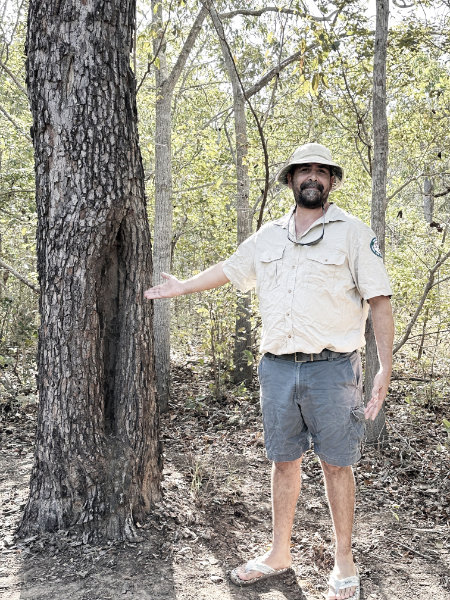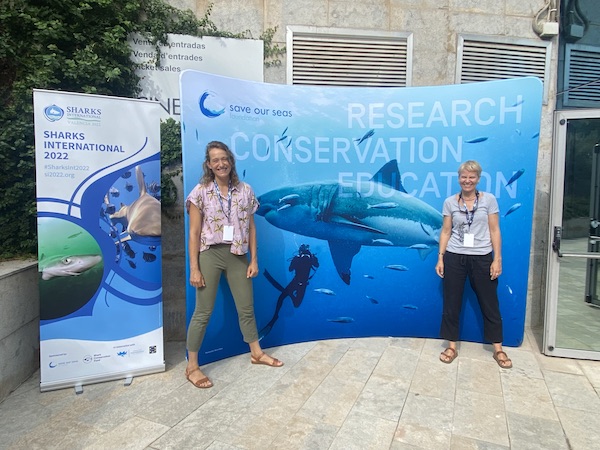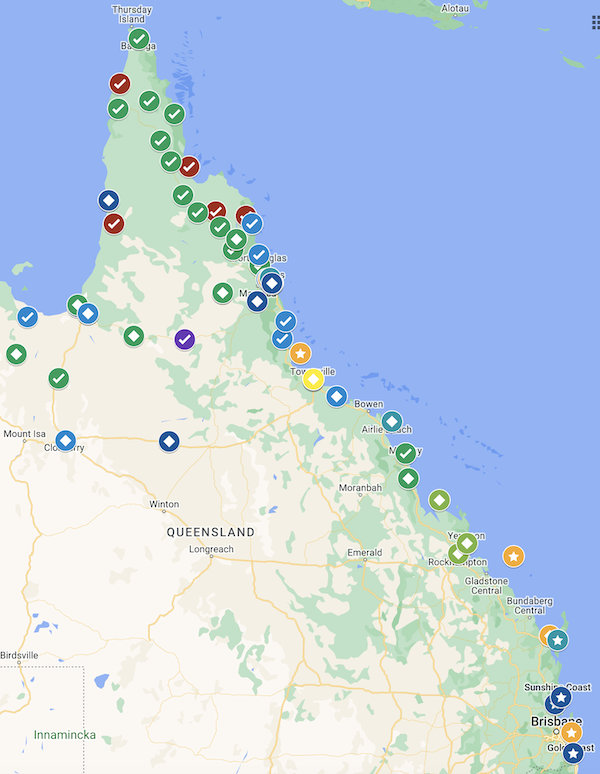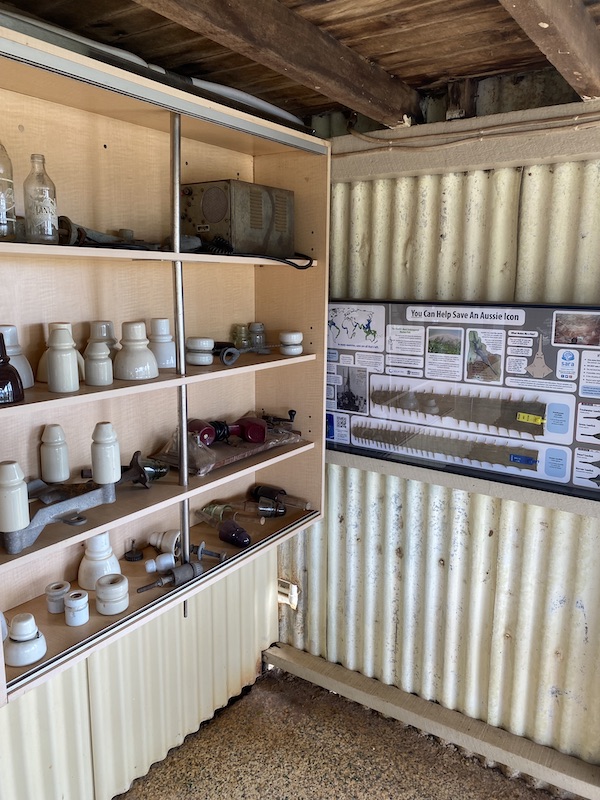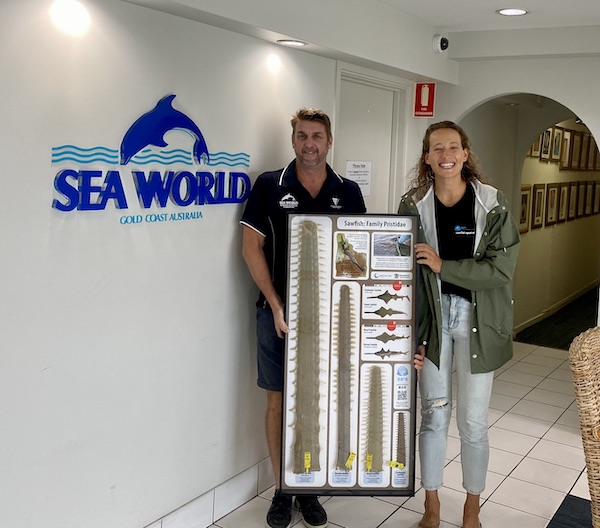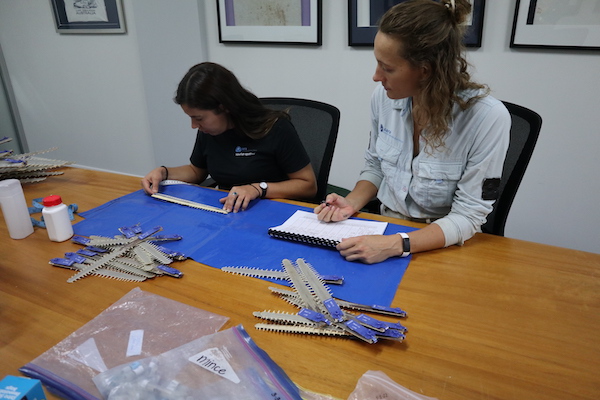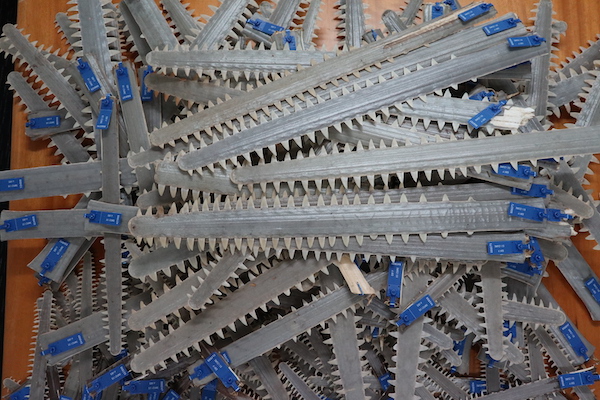by Nikki Biskis
Sometimes I think back to that day in Melbourne where I called Barbara at Sharks And Rays Australia to ask what she had. We had an honest conversation. I was trying to break into the field of ecology, but I couldn’t afford more student loans. I’d work for free, as long as I had to, until I had the experience and papers I needed to get into a program. I just finished one internship down here and was not ready to go back to the States. The plan was to give trophy rostra another life, through display cases aiming to at educate fishers. It would take six to nine months, and I would work on other datasets as an intern with SARA.
Fast forward to three years later, and I was beginning my PhD, with the plan of assessing sawfish ecology through reported sightings, historic records, and acoustic tracking. Over the last two years, I’d seen rostra and photographs – hundreds and hundreds of each – but now I finally got to head into the field and see these animals in the wild! With the first round of display cases finally built, Barbara and I began to distribute them on our way to field sites in Far North Queensland. They’d continue to engage the community long after we were gone.
Except I didn’t see a live sawfish, not for a long time. But the communities did. The cases became a talking point at the local roadhouses and information centres. One day I got an email from Lockhart River saying that they’d seen our case in Coen – could they have one too? More importantly, the Land and Sea Ranger stations jumped on board, all nine of which are involved in ongoing field surveys for sawfish on Country, reporting sightings back year-round. What started as a short project was turning into a strong community, in ways that I had not anticipated.
Since the first round of deliveries, we branched out to include more populated areas down south. These areas report a higher percentage of dead or saw-less sawfish, highlighting critical locations for outreach. We led SARA’s first Mackay field expedition in Nov 2021, and as with the rest of my journey, the Display Cases came with us. Large organisations like Australia Zoo and the Kingfisher Bay resort on K’Gari (Fraser Island) also got involved. In May of this year, the first confirmed sawfish sighting was reported off K’Gari in 60 years.
The display project wrapped up in September, which was bittersweet. However, the conversation continues, not just locally, but internationally as well. Both Barbara and I presented research at Sharks International in Valencia, in October. These presentations highlighted findings from the rostrum collection (1), and our citizen science database (2), showing that the original mission is a reality. These rostra are more than just old trophies – they have enormous potential to protect the animals we have left.
As for me, I am officially a confirmed PhD candidate as of this month. It seems awfully fitting that I sent out one of our last remaining cases to Mackay the day before my confirmation seminar. My thesis has shifted away from tagging back to where it all began – rostra. I got to complete a morphometric analysis, two years in the works, which is due to be submitted as a publication early this year (3). The sightings chapter is currently being analysed, and in addition to Sharks International, I presented preliminary findings at the annual conference of the Australian Society of Fish Biology in Gold Coast in November (4). Rostra are also a critical part of Chapters 3 and 4, looking at tooth microchemistry to determine provenance, and historic records.
In the end it was clearly not a one-year project, rather, these display cases heralded my entry into the sawfish world. I cannot thank Save Our Seas enough for the ongoing adjustments to grant terms during Covid, supporting a project that has brought together so many people to look after sawfish. And of course, Sharks And Rays Australia (read: Barbara) for the continued support and training as I navigate this PhD, and taking a chance on me in the first place.
Major funding for the Display Case Project, Citizen Science Database and our Sawfish Spotter’s t-shirts was provided by the Queensland’s Chief Scientist’s Advanced Queensland Citizen Science Initiative. This project was also supported by a Small Grant from Save Our Sea Foundation. Our field work for 2020 and 2022 was funded by: Sea World Research and Rescue Foundation Inc., Great Barrier Reef Foundation, Queensland Government Community Sustainability Action Grants.
References:
- Wueringer, BE, Biskis, VN & Pinkus, GA. 2022. Impact of trophy collection and commercial fisheries on sawfishes in Queensland, Australia. Endangered Species Research. In print.
- Biskis, VN, Townsend, KA, McDavitt, MT & Wueringer, BE. Analysis of current species ranges, hotspots, and interaction with regions of high fishing pressure in Queensland (in prep)
- Biskis, VN, Wueringer, BE, Holmes, BJ, & Townsend, KA. Using rostral morphometrics to access size class info from historic sawfish specimens (in prep)
- Biskis, VN, Townsend, KA, McDavitt, MT & BE Wueringer (2022) Sawfish spotters fill data gaps critical for sawfish protections in Queensland, Australia (Abstract)
Thank you to all participating display locations:
- Albatross Bay Resort, Weipa, QLD
- Archer River Roadhouse, Archer River, QLD
- Australia Zoo, Beerwah, QLD
- Bamaga Tavern, Bamaga, QLD
- Barra Jacks, Rockhampton, QLD
- Barramundi Discovery Centre, Karumba, QLD
- Burdekin Gateway Visitor Information Centre, Home Hill, QLD
- Burdekin Visitor Information Centre, Ayr, QLD
- Burke and Wills Roadhouse, Four Ways, QLD
- Burketown Information Centre, Burketown, QLD
- C4 (Community for Coastal Cassowary Conservation), Mission Beach, QLD
- Cape York Peninsula Lodge, Bamaga, QLD
- Capricorn Coast Information Centre, Yeppoon, QLD
- Cardwell Rainforest and Reef Visitor Centre, Cardwell, QLD
- Chillagoe Cockatoo Hotel, Chillagoe, QLD
- Chillagoe Hub Information Centre, Chillagoe, QLD
- Cloncurry Unearthed Visitor Information Centre & Museum, Cloncurry, QLD
- Croydon Club Hotel, Croydon, QLD
- Daintree Discovery Centre, Cow Bay, QLD
- Daydream Island, Whitsundays, QLD
- Eimeo Pub, Mackay, QLD
- Exchange Hotel, Coen, QLD
- Gregory Downs Hotel, Gregory, QLD
- Gympie Bones Museum, Gympie, QLD
- Hann River Roadhouse, Laura, QLD
- Hemingway’s Brewery – Cairns & Port Douglas, QLD
- Heron Island Research Station, Heron Island, QLD
- Historic Village Herberton, Herberton, QLD
- Hope Vale Ranger Station, Hope Vale, QLD
- Kingfisher Bay Resort, K’gari, QLD
- Koumala Hotel, Koumala, QLD
- Kowanyama PBC, Kowanyama, QLD
- Kowanyama Ranger Station, Kowanyama, QLD
- Kuranda Visitor Information Centre, Kuranda, QLD
- Lakeland Hotel Motel, Lakeland, QLD
- Lakeland Roadhouse, Lakeland, QLD
- Laura Roadhouse, Laura, QLD
- Mackay Marina, Mackay, QLD
- Mapoon Aboriginal Shire Council, Mapoon, QLD
- Moreton Bay Research Station, Dunwich, QLD
- Moreton Telegraph Station, Wenlock, QLD
- Mornington Island Arts Centre, Mornington Island, QLD
- Mornington Island State School, Mornington Island, QLD
- Musgrave Roadhouse, Yarraden, QLD
- Nature’s Powerhouse (Cooktown Visitor Information Centre), Cooktown, QLD
- Normanton Library and Information Centre, Normanton, QLD
- Northern Gulf NRM Office, Georgetown, QLD
- Orpheus Island Research Station, Orpheus Island, QLD
- Palmer River Roadhouse, Lakeland, QLD
- Plumtree Store, Stanage, QLD
- Pormpuraaw Art & Culture Centre, Pormpuraaw, QLD
- Pormpuraaw Council Office, Pormpuraaw, QLD
- Port Stewart Ranger Station, Port Stewart, QLD
- Purple Pub, Normanton, QLD
- Reef Teach, Cairns, QLD
- Rinyirru Ranger Base, Rinyirru National Park, QLD
- Rodney Fox Shark Museum, Mile End, SA
- Sea Life Aquarium – Sunshine Coast, QLD
- Sea Link Queensland, Townsville, QLD
- Sea World, Gold Coast, QLD
- Secret Spot Tackle Shop, Yeppoon, QLD
- Sunset Tavern, Karumba, QLD
- The Greenhoose, Lockhart River, QLD
- Winton Hotel, Winton, QLD



